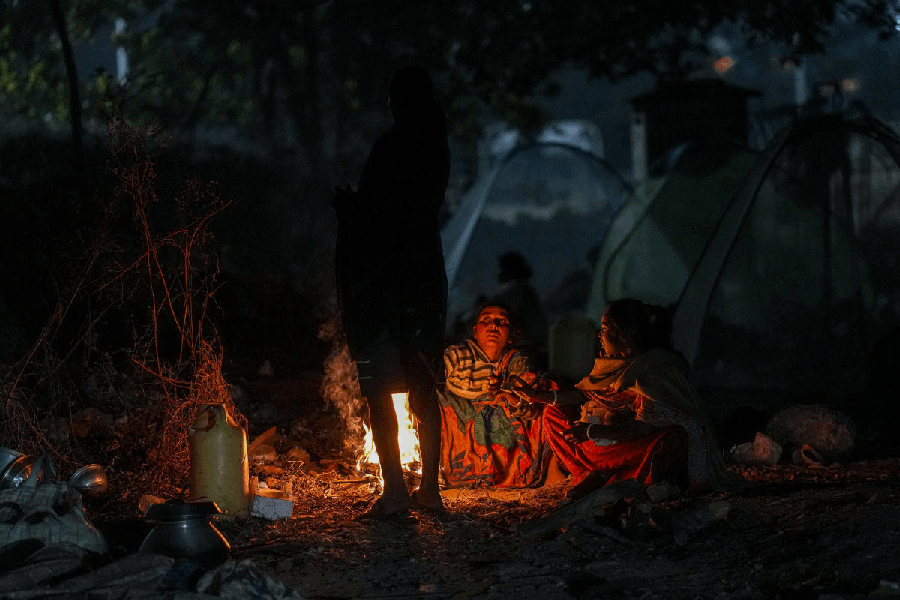|
|
If I were to draw a picture of a typical middle-class Indian home around the time I was growing up, I would leave out some things we now take for granted. The TV set, for example, or the cordless phone and the computer. Instead, I would sketch in some curiosities, especially in the living room. These curiosities, called ‘showpieces’, sat stolidly in cabinets called ‘showcases’, as if they were there by birthright. Any books that had sneaked into these cabinets ended up looking apologetic, like second-class citizens. The most popular showpiece was the miniature Taj, with the best of its kind lit up with tiny light bulbs.
As time went by and technology grew up even in our part of the world, the showpiece began to move — with the assistance of what seemed like magic, but was, invariably, well-charged batteries. The hot favourite of the period was a pair of pink storks on either side of a water tank, taking turns to dip a long slim beak into the water. It went on forever — or at least as long the switch was on. It took some years, but I was lucky enough to see the scaled-up version of the stork showpiece. This was a grand “religious showpiece” on display in Delhi’s Panchkuian Road. Devi had been animated by human ingenuity to bend from the waist so that her sword could decapitate Mahishasura. Then she straightened up while the demon’s head reconnected itself to his body, ready to be cut off again. Devi bent once more to her task. It could be argued that the showpiece illustrates Good continuously overcoming Evil — but only by ignoring the suggestion of Good caught in a hellish situation where a job never gets done.
Popular kitsch moved on, building on its functional strength. Perhaps the loudest example of this transition was the reversing announcement. Suddenly, no self-respecting car reversed without a woman’s voice calling out shrilly, “Attention! This car is reversing!” The woman spoke in an American accent, still something of a novelty.
But from Taj to thirsty stork to remote-controlled Devi to faux American announcement, the kitsch in our lives resided in objects that retained some innocence despite their dubious aesthetic value.
Suppose we fast-forward to the present day. Living rooms continue to exhibit showpieces, though some are called souvenirs and most of them are made in China. And there are more than enough places that still sell visual, audio and animated objects of kitsch — whether mock religious, Feng shui, Disney, or “ethnic”. But Panchkuian Road, one of the erstwhile sources of wondrous kitsch, has changed, and may soon cease to exist as we knew it. The old furniture market is in danger of being ploughed through by the Metro. And the change may go deeper. The real change may be that the best source of such kitsch is longer the street or the marketplace, but in the TV set sitting in every living room like its beating heart. And the showpiece of the kitsch bouquet delivered via the box is reality television.
Consider a recent example that will probably have scholars of cultural studies burning the midnight oil for the next 10 years: Rakhi Sawant, coy and tattooed bride, choosing a groom in a swayamvar organized by a TV channel in loco parentis. This is a particularly eloquent example, because it combines a host of suggestions in its kitschified remix of our favourite bit of reality — the imminent wedding.
There is the hint of “ancient Indian tradition” in the form of the swayamvar. The show raises a quick salute to the golden past, even if this past may only require going back as far as the pages of Amar Chitra Katha. The show makes meticulous references to ritual — but again, these have a secondhand feel to them, as if they are xerox images of all the weddings produced by the Bollywood machine.
Titillation is a critical ingredient; in fact, the show thrives on titillation of many sorts. There’s the sensation of getting the dirt behind the scenes, the voyeuristic pleasure of the TV camera becoming your eye and the microphone becoming your ear. There’s the official excuse to dress up in garish clothes and jewellery, and the excuse to dance to Bollywood hits when the action flags. There’s spectacle, noise, celebration, love, sex and humour all thrown into the titillation remix. And all of this tamasha is, of course, personified in the bride — with Rakhi Sawant expertly hamming a parody of the coy and nervous bride. In short, the wedding is the perfect setting for an explosion of Technicolor kitsch that violates every conceivable principle of aesthetics.
What is this thing we call kitsch with such an easy sneer? The word, popularized in the 1930s by theorists such as Adorno and Broch, was first used to denote that which is in opposition to art. Kitsch included artefacts considered inferior or unoriginal, often tastelessly imitating art of recognized value. The key word here is imitating.
Since then, kitsch has been reinvented in original ways, making use of irony, for example, and blurring the boundary between high and popular art. One moving force of this enterprise has been the democratic impulse: the stuff of art is to be found around us, not in some rarefied aesthetic hothouse. But for the lay person, these twists of postmodernism are easier to identify and appreciate in what continues, essentially, to be high (and highly priced) art. The intentions, and the aesthetic experience, of the more powerful kitsch in our lives, are somewhat different.
In the heady kitsch of reality TV too, artifice is used to create a parody that occasionally has its clever, or at least unexpected, moments. In Rakhi Sawant’s swayamvar show, the “traditional” proceedings are interrupted when the bride asks her friends to join her in singing a hymn to Jesus before she makes her choice. You find yourself wondering whether the pretend elders in the crowd or the invisible pujari will have something to say about this. But the moment passes and stretches into a boring interval till the bride ends it by telling God directly that she loves him.
The reality is that the parody in this show never rises above the older definition of kitsch as something imitative. Such kitsch, however amusing and quirky, however accessible to large numbers of people, is essentially a parody of the aesthetic experience. Not only is it counterfeit; it is also deeply conformist. As Milan Kundera once said, kitsch offers a worldview in which “all answers are given in advance”. It precludes the need for questioning.
Television programming in India is uniquely placed to give us our daily dose of kitsch. It is essentially conservative. It may parody the virginal bride making her choice, but it firmly upholds the ideal. Most important, it never really feels, nor does it challenge the viewer to think. It is content to imitate human feeling and lull the viewer into making do with sugary stereotypes or the trivial. Even love, that great theme song of the wedding, gets left out in the process because it may involve a search for meaning.












